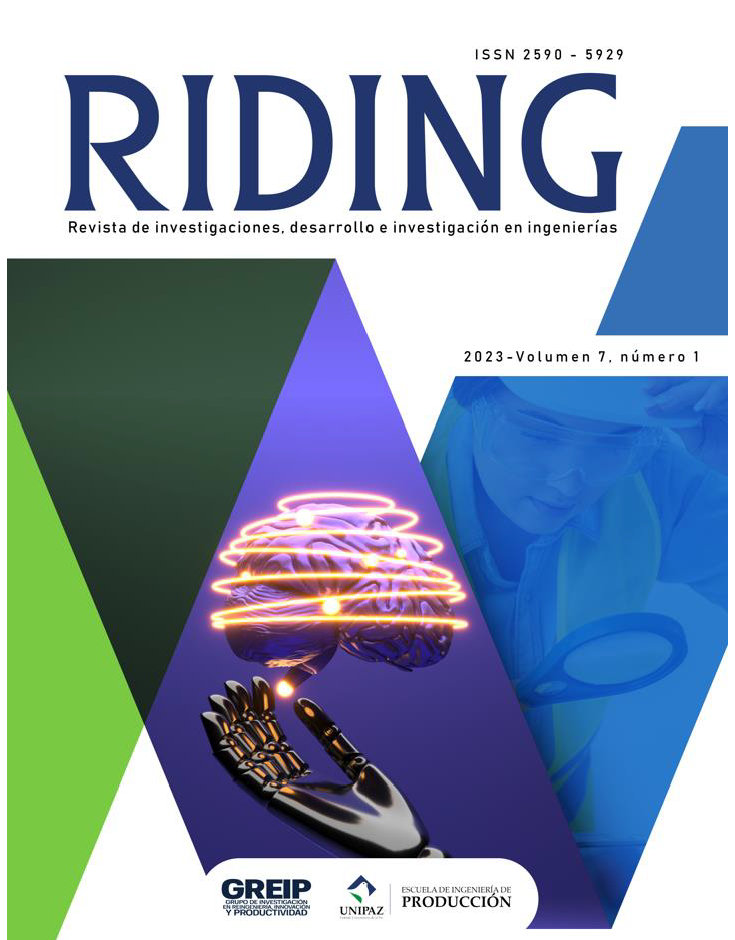El concepto de biorrefinería en la transición energética: una revisión del estado del arte
Palavras-chave:
biodiésel, bioetanol, biomasa, transformación química, economía circular, química verde.Resumo
Los biocombustibles líquidos brindan una de las pocas opciones para reemplazar los combustibles fósiles a corto y mediano plazo. Tienen el potencial de ofrecer ahorros de gases de efecto invernadero y seguridad energética. Si la producción de biocombustibles se proyecta a largo plazo de forma similar a la producción de combustibles fósiles, la diversidad de biocompuestos intermediarios y subproductos que pueden obtenerse de forma paralela a los biocombustibles podrían en conjunto dar lugar al concepto de biorrefinería. Teniendo en cuenta esto, la meta de esta revisión es realizar un análisis del estado del arte respecto al concepto de biorrefinería, discriminando aspectos fundamentales como los fundamentos, los tipos de materia prima, los principales productos, los esquemas de transición de las refinerías tradicionales a este nuevo concepto, y los distintos procesos biotecnológicos al interior de una biorrefinería.
Referências
P. I. Capellán, M. Mediavilla, and L. J. De Castro, Carlos. Carpintero, Óscar. Miguel, “Agotamiento de los combustibles fósiles y escenarios socioeconómicos : un enfoque integrado,” Energy, pp. 1–62, 2014.
V. R. Moreira et al., “Circular economy in biorefineries: Scale-up of anaerobic/aerobic membrane bioreactors for vinasse recycling,” J. Clean. Prod., vol. 377, no. September, 2022.
C. A. Cardona Alzate, Ó. J. Sánchez Toro, M. I. Montoya Rodríguez, and J. A. Quintero Suárez, “Producción de etanol carburante: material lignocelulósico una nueva alternativa,” Ing. Recur. Nat. y del Ambient., no. 3, pp. 47–55, 2005.
A. Gupta and J. P. Verma, “Sustainable bio-ethanol production from agro-residues: A review,” Renew. Sustain. Energy Rev., vol. 41, pp. 550–567, 2015.
A. R. C. Morais, A. M. Da Costa Lopes, and R. Bogel-Łukasik, “Carbon dioxide in biomass processing: Contributions to the green biorefinery concept,” Chem. Rev., vol. 115, no. 1, pp. 3–27, 2015.
A. A. Kiss, J. P. Lange, B. Schuur, D. W. F. Brilman, A. G. J. van der Ham, and S. R. A. Kersten, “Separation technology–Making a difference in biorefineries,” Biomass and Bioenergy, vol. 95, pp. 296–309, 2016.
S. W. Fitzpatrick, “The biofine technology: A ‘bio-refinery’ concept based on thermochemical conversion of cellulosic biomass,” ACS Symp. Ser., vol. 921, pp. 271–287, 2006.
G. Taylor, “Biofuels and the biorefinery concept,” Energy Policy, vol. 36, no. 12, pp. 4406–4409, 2008.
C. C. Geddes, I. U. Nieves, and L. O. Ingram, “Advances in ethanol production,” Curr. Opin. Biotechnol., vol. 22, no. 3, pp. 312–319, 2011.
T. Romero Cortes, J. A. Cuervo-Parra, V. José Robles-Olvera, E. Rangel Cortes, and P. A. López Pérez, “Experimental and Kinetic Production of Ethanol Using Mucilage Juice Residues from Cocoa Processing,” Int. J. Chem. React. Eng., vol. 16, no. 11, 2018.
L. E. Rincón, J. Moncada, and C. A. Cardona, “Analysis of potential technological schemes for the development of oil palm industry in Colombia: A biorefinery point of view,” Ind. Crops Prod., vol. 52, pp. 457–465, 2014.
E. Caballero and C. Soto, “Valorization of Agro-Industrial Waste into Bioactive Compounds: Techno-Economic Considerations,” Biorefinery, pp. 235–252, 2019.
J. Clark and F. Deswarte, “The Biorefinery Concept: An Integrated Approach,” Introd. to Chem. from Biomass Second Ed., vol. 9781118714485, pp. 1–29, 2015.
S. I. Mussatto et al., “Technological trends, global market, and challenges of bio-ethanol production,” Biotechnol. Adv., vol. 28, no. 6, pp. 817–830, 2010.
E. Castillo, “Production of Cellulosic Ethanol from Palm EmptyFruit Bunches: the Perspective of Ecopetrol,” Palmas, vol. 2, no. 37, pp. 115–118, 2016.
T. L. Chew and S. Bhatia, “Catalytic processes towards the production of biofuels in a palm oil and oil palm biomass-based biorefinery,” Bioresour. Technol., vol. 99, no. 17, pp. 7911–7922, 2008.
S. Et.al, “Propiedades fisicoquímicas del aceite y biodiesel producidos de la Jatropha curcas L. en la provincia de Manabí, Ecuador,” Rev. Cuba. Química, vol. 30, no. 1, pp. 143–159, 2017.
S. Samanta and R. R. Sahoo, “Waste Cooking (Palm) Oil as an Economical Source of Biodiesel Production for Alternative Green Fuel and Efficient Lubricant,” Bioenergy Res., vol. 14, no. 1, pp. 163–174, 2021.
L. Zhang et al., “Biorefinery-oriented full utilization of food waste and sewage sludge by integrating anaerobic digestion and combustion: Synergistic enhancement and energy evaluation,” J. Clean. Prod., vol. 380, no. P1, p. 134925, 2022.
H. B. Carminati, R. de F. D. Milão, J. L. de Medeiros, and O. de Q. F. Araújo, “Bioenergy and full carbon dioxide sinking in sugarcane-biorefinery with post-combustion capture and storage: Techno-economic feasibility,” Appl. Energy, vol. 254, no. January, p. 113633, 2019.
S. Consonni, R. E. Katofsky, and E. D. Larson, “A gasification-based biorefinery for the pulp and paper industry,” Chem. Eng. Res. Des., vol. 87, no. 9, pp. 1293–1317, 2009.
H. A. Ruiz, R. M. Rodríguez-Jasso, B. D. Fernandes, A. A. Vicente, and J. A. Teixeira, “Hydrothermal processing, as an alternative for upgrading agriculture residues and marine biomass according to the biorefinery concept: A review,” Renew. Sustain. Energy Rev., vol. 21, pp. 35–51, 2013.
M. Mora, E. Fàbregas, F. Céspedes, J. Bartrolí, and N. Puy, “Production and separation of value-added compounds from pine wood using pyrolysis and biorefinery techniques,” Fuel Process. Technol., vol. 238, no. September, 2022.
S. Rehman, M. Khairul Islam, N. Khalid Khanzada, A. Kyoungjin An, S. Chaiprapat, and S. Y. Leu, “Whole sugar 2,3-butanediol fermentation for oil palm empty fruit bunches biorefinery by a newly isolated Klebsiella pneumoniae PM2,” Bioresour. Technol., vol. 333, no. April, p. 125206, 2021.
A. Bouaid, N. Tardon, O. Hurtado, and J. M. Marchetti, “Enzymatic production of sustainable jojoba fatty alcohols.Biorefinery approach,” Food Bioprod. Process., vol. 139, pp. 89–97, 2023.
D. D. Nguyen et al., “Transesterification and fuel characterization of rice bran oil: A biorefinery path,” Fuel, vol. 253, no. January, pp. 975–987, 2019.
C. Moustani et al., “Novel aqueous-phase hydrogenation reaction of the key biorefinery platform chemical levulinic acid into Γ-valerolactone employing highly active, selective and stable water-soluble ruthenium catalysts modified with nitrogen-containing ligands,” Appl. Catal. B Environ., vol. 238, no. June, pp. 82–92, 2018.
J. K. Saini, Himanshu, Hemansi, A. Kaur, and A. Mathur, “Strategies to enhance enzymatic hydrolysis of lignocellulosic biomass for biorefinery applications: A review,” Bioresour. Technol., vol. 360, no. April, p. 127517, 2022.
C. Liu et al., “Lignin-first biorefinery of corn stalk via zirconium(IV) chloride/sodium hydroxide-catalyzed aerobic oxidation to produce phenolic carbonyls,” Bioresour. Technol., vol. 354, no. February, p. 127183, 2022.
S. C. Rabelo, P. Y. S. Nakasu, E. Scopel, M. F. Araújo, L. H. Cardoso, and A. C. da Costa, “Organosolv pretreatment for biorefineries: Current status, perspectives, and challenges,” Bioresour. Technol., vol. 369, no. September 2022, 2023.
N. Van Duc Long, J. Hong, L. C. Nhien, and M. Lee, “Novel hybrid-blower-and-evaporator-assisted distillation for separation and purification in biorefineries,” Chem. Eng. Process. Process Intensif., vol. 123, no. August 2017, pp. 195–203, 2018.
F. Temelli and O. N. Ciftci, “Developing an integrated supercritical fluid biorefinery for the processing of grains,” J. Supercrit. Fluids, vol. 96, pp. 77–85, 2015.
B. Kumar, N. Bhardwaj, K. Agrawal, V. Chaturvedi, and P. Verma, “Current perspective on pretreatment technologies using lignocellulosic biomass: An emerging biorefinery concept,” Fuel Process. Technol., vol. 199, no. July 2019, 2020.
J. M. Sigüencia Avila, J. W. Delgado Noboa, F. R. Posso Rivera, and J. P. Sánchez Quezada, “Estimación del potencial de producción de bioetanol para los residuos de la corteza del cacao en Ecuador,” Cienc. Tecnol. Agropecu., vol. 21, no. 3, pp. 1–20, 2020.
E. A. Llanes Cedeño, “Producción e Impacto del Biodiesel: Una Revisión,” INNOVA Res. J., vol. 2, no. 7, pp. 59–76, 2017.
Publicado
Edição
Seção
Licença

Este obra está bajo una licencia de Creative Commons Reconocimiento-NoComercial-CompartirIgual 3.0 Unported.


